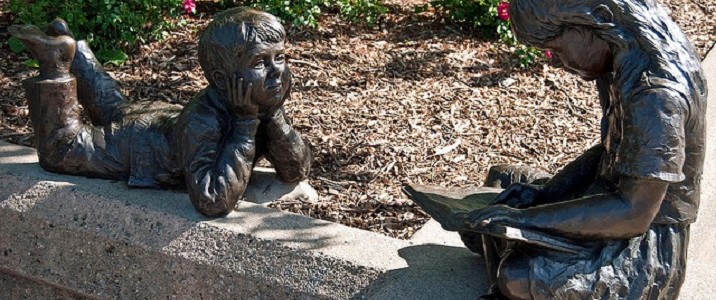 Amy Leask, guest blogger on Recruiting Women Technoblog, makes a convincing argument in “STEM, Girls and the Importance of Storytelling,” to engage young women in STEM by using storytelling. She’s not talking about storytelling around the campfire, but giving a social context to STEM facts and theories. She encourages educators to share with students the stories of the individuals who made significant discoveries in science and the social impact of science over history. Educators can also make science more engaging by facilitating discussions of current social issues involving science, and letting students explore science through role-playing, digital media, and science fiction.
I have mentioned in this blog before the major 1997 study, Talking about Leaving: Why Undergraduates Leave the Sciences, by Elaine Seymour and Nancy M. Hewitt. After interviewing 460 STEM undergraduates at 7 colleges and universities, the researchers discovered the main factor in a student’s decision to switch out of a STEM major was “lack of/loss of interest in SME [science, mathematics, and engineering]: ‘turned off by science’” followed by “non-SME major offers better education/more interest” (p.33). In interviews, female and male students explained how dull the bare presentation of facts and problems was in their lecture courses. They wanted more of “the big picture” surrounding scientific knowledge, and many eventually switched to social sciences or humanities majors where they found educators who used social context in their pedagogy.
Are there ways academic librarians could enable STEM faculty to do more storytelling?
Photo attribution: Art at the library: “Once upon a Time,” by John K, 2009. The image has not been modified. Some rights are reserved by a Creative Commons license.
Amy Leask, guest blogger on Recruiting Women Technoblog, makes a convincing argument in “STEM, Girls and the Importance of Storytelling,” to engage young women in STEM by using storytelling. She’s not talking about storytelling around the campfire, but giving a social context to STEM facts and theories. She encourages educators to share with students the stories of the individuals who made significant discoveries in science and the social impact of science over history. Educators can also make science more engaging by facilitating discussions of current social issues involving science, and letting students explore science through role-playing, digital media, and science fiction.
I have mentioned in this blog before the major 1997 study, Talking about Leaving: Why Undergraduates Leave the Sciences, by Elaine Seymour and Nancy M. Hewitt. After interviewing 460 STEM undergraduates at 7 colleges and universities, the researchers discovered the main factor in a student’s decision to switch out of a STEM major was “lack of/loss of interest in SME [science, mathematics, and engineering]: ‘turned off by science’” followed by “non-SME major offers better education/more interest” (p.33). In interviews, female and male students explained how dull the bare presentation of facts and problems was in their lecture courses. They wanted more of “the big picture” surrounding scientific knowledge, and many eventually switched to social sciences or humanities majors where they found educators who used social context in their pedagogy.
Are there ways academic librarians could enable STEM faculty to do more storytelling?
Photo attribution: Art at the library: “Once upon a Time,” by John K, 2009. The image has not been modified. Some rights are reserved by a Creative Commons license.
Related


Leave a Reply